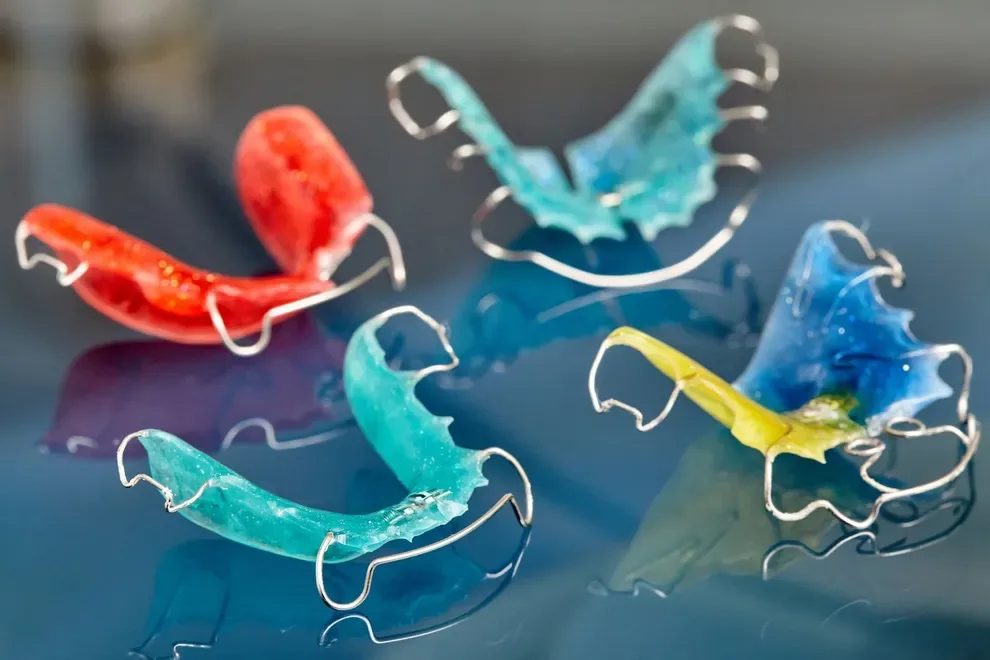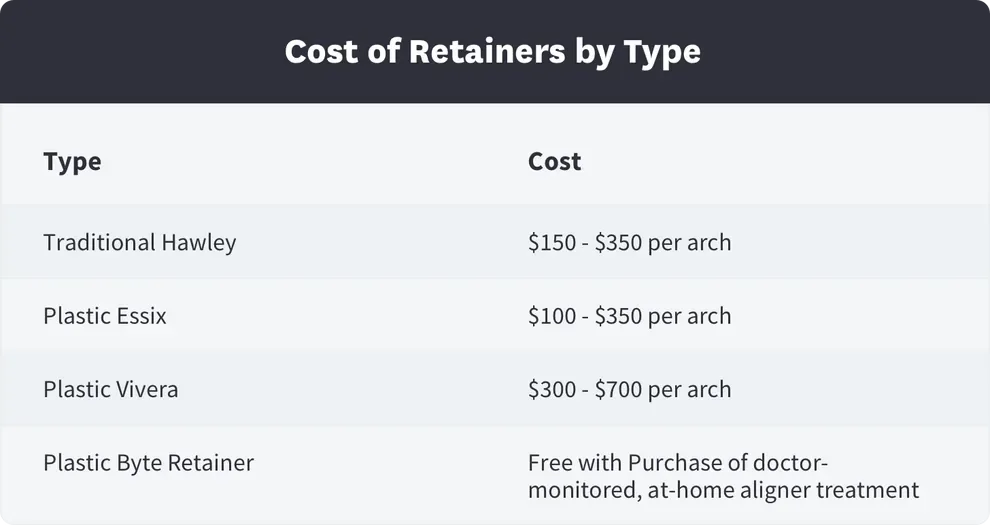How to Avoid Expensive Retainers

Table of Contents
- Why are Retainers so Expensive?
- Why are Permanent Retainers so Expensive?
- Retainers After Aligners
- Getting the Best Retainer
- Where to Get Cheap Retainers
- References
You can avoid expensive retainers by choosing a teeth straightening plan that includes your first set of retainers in the overall cost. Then, take good care of your retainers, so you don’t have to pay replacement costs if they are lost or damaged.
Retainers are a valuable part of orthodontic treatment, and they are important whether you get braces or you use clear aligners like Invisalign or Byte. You may wear a retainer for one or two years after you complete braces or aligner treatment, but most often, it’s recommended to wear it nightly for the rest of your life.

Why are Retainers so Expensive?
The relatively high price of retainers provided through an orthodontist may be surprising. However, these devices are custom-made to fit and retain your corrected bite. The price may vary depending on your provider and other factors.
The type of retainer you choose will also impact your cost. Here are the most popular types of retainers and their costs:
A standard retainer, or a Hawley retainer, is made from a combination of metal and acrylic. These are removable devices that you wear for several hours per day, usually overnight. Those hours encourage your teeth to stay in the alignment you worked so hard to achieve with braces or clear aligners.
Hawley retainers cost about $150 to $350 each. If you break them, lose them, or otherwise do not care for them, your dental insurance is less likely to help you replace them.
And that dollar amount covers each device, per arch of teeth. If you need two retainers, one for each jaw, your cost doubles.
Retainers are also available in plastic form. Essix retainers were the first plastic retainers on the market. This is a clear plastic or polyurethane retainer that covers your teeth and sits just above your gum line, much like clear aligners.
Many people still refer to all plastic retainers as Essix retainers. However, today there are many plastic retainers on the market, and Essix is just one of many brands.
A study found that there was no significant difference in plastic retainers compared to Hawley retainers after a standard course of orthodontic treatment. The study surveyed 94 customers over six months.
Some forms of plastic retainers are relatively inexpensive. If plastic or polyurethane retainers work as well as Hawley retainers, this may allow you to save a bit of money on this important device. The cost of this retainer is similar to Hawley retainers, generally between $100 and $350.
Plastic retainers are usually a slightly thicker material than the material used for aligners. This is because you wear these retainers for much longer. Aligners are replaced every couple weeks as your teeth move, but your retainer should last you for much longer.
Some plastic retainers, like Vivera retainers which were developed to work with Invisalign treatment, cost significantly more — around $300 to $750.
Why are Permanent Retainers so Expensive?
Permanent retainers are similar in cost to other retainer options. They usually cost between $150 to $500, depending on your treatment needs and plan. If you get a permanent retainer for both your top and bottom jaws, you may end up spending $1,000 total.
You might also need to visit your dentist more frequently — twice a year instead of just once a year, for example — which can add costs over time.
Permanent retainers will be removed at some point in your life. Although they are not removable, your dentist will determine when treatment with the retainer is no longer necessary, often years later. You will need to pay for the visit to have the retainer removed.
Your dentist will not give you a permanent retainer unless it is the best option to prevent your teeth from shifting out of alignment. If you are an adult, your orthodontic treatment might not be covered by your insurance. Work with your dentist to determine the best options for your mouth and your wallet.
Retainers After Aligners
Doctor-monitored, at-home aligners help people achieve straight teeth and beautiful smiles without continual visits to an orthodontist. It’s a course of teeth straightening that takes place at home, where you replace your teeth aligners every couple weeks. The process is often faster and cheaper than straightening teeth with braces, and it works well for minor to moderate teeth misalignment issues.
You may wonder if you even need a retainer if you use aligners to straighten your teeth. Can you keep your last plastic aligner and wear it as needed? You may assume this works similarly to a retainer, but you should not stick to this aligner without consulting with your treatment team.
Again, the retainers provided after a course of aligners are thicker and more durable than a standard aligner.
Getting the Best Retainer without Breaking the Bank
If you need a retainer following braces, your orthodontist will create the device for you. These devices are custom made for your teeth.
If you lose or break your retainer, you’ll need a new one, so it’s important to take care of your retainer. It is equally important to wear a retainer to keep your teeth aligned for years.
If you skip this treatment to save a few hundred dollars, your teeth will most likely return to their original positioning fairly quickly. This wastes all the money you spent on straightening your teeth.
There are some ways to avoid spending hundreds of dollars on a retainer, especially if you work with mail-order aligner companies like Byte.
Where Can You Get Cheap Retainers?
If you’re considering orthodontic treatment options, and factoring in the overall price of treatment as well as the cost of retainers, you’ll likely come to the conclusion that at-home clear aligners offer more value than braces treatment.
Straightforward, affordable pricing is one of the reasons mail-order aligners have become so popular with those looking to correct mild-to-moderate orthodontic issues. Aligners offer many other advantages over braces as well. They’re removable, virtually invisible, and offer fast results. The average treatment time is about 4 to 6 months.
Top aligner providers offer even more. Byte, for example, includes a HyperByte massage device (massage tools like these have been shown to improve aligner comfort and effectiveness) in every aligner kit, plus a Byte for Life guarantee and access to their award-winning app where you can track your aligner progress throughout your doctor-monitored treatment.
Byte also includes your first after-treatment retainer for free.
